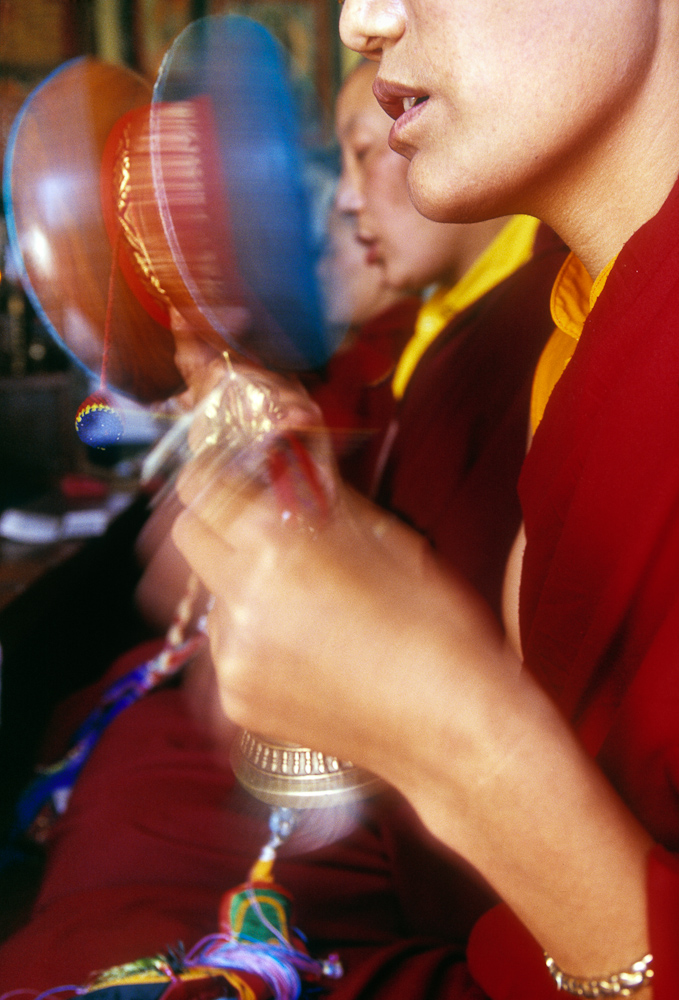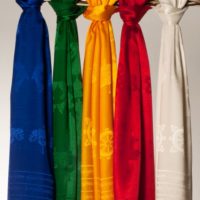Description
When you request a puja please be sure to provide information regarding who and what you’d like your prayers to be directed to.
Tibetans recite mantras and prayers to purify the mind, deal with negative emotions, increase merit, and to invite help from the Buddha and various enlightened beings.
Butter Lamps Offering (Mar-me): Butter lamps are part of daily traditional Tibetan practice and are also lit for many occasions. It is common to offer butter lamps for those who are sick or have passed away (to light the path towards liberation). Butter lamps are also lit for happy occasions like birthdays, marriages, or to aid with focus and meditation. Tibetans light butter lamps on sacred days in the Tibetan Buddhist calendar, such as the 10th, 15th and 25th day of each lunar month, as well as during the holy month of Saga Dawa. This offering will provide fuel to light 100 butter lamps, which is usually butter or oil.
Medicine Buddha (Men-la): This puja aids in healing physical, mental, and emotional ailments. It invokes the wisdom and blessings of the Medicine Buddha (Sang-gyay Men-la) and can also enhance and support your work if you are a medical practitioner.
Offering to Tara (Drol-chok): Tara is known as a protector who relieves physical, emotional, and spiritual suffering. This elaborate offering involves creating ritual cakes called tormas and the use of musical instruments. This puja is particularly effective in removing obstacles and fulfilling wishes.
Twenty-One Praises to Tara (Dolma-bum): Tara is believed to be a Bodhisattva of compassion and a protector who relieves physical, emotional, and spiritual suffering. Each of the twenty-one emanations of Tara has her own name, special attributes, and a specific mantra with which she is associated, offering protection from various types of fears, harm, and calamities. The Praises to the 21 Taras puja protects you from fear and dangers, and is renowned for removing obstacles and fulfilling wishes, especially wishes on the spiritual path. This puja includes 100,000 recitations of the “Twenty-one Praises to Tara” prayer. Due to the time-intensive nature of this prayer, it will take an average of two weeks to complete.
Long Life Ritual (Nam-gyal Tse-chok): This is a prayer for longevity to the female deity, Nam-gyal-ma, one of the three buddhas of long life.
Four Hundred Offerings (Gyab-zhi): Gyab-zhi is one of the most widely practiced ceremonies in Tibetan Buddhism. The ritual involves four sets of 100 offerings: 100 butter lamps to eradicate delusion; 100 ritual cakes called tormas to overcome desires; 100 human effigies made of dough to subdue the demon of death; and 100 tsa-tsa which are stamped clay votive images to overcome tainted aggregates. The intention of the Four Hundred Offerings is to aid in overcoming inauspiciousness, disease, untimely death, and challenging supernatural forces.
Three Pairs (Chak-sum): Chak-sum is an offering of three ritual cakes, or tormas: One to the protectors of the Buddha Dharma, another to local spirits, and a third to the suffering beings of the “Hungry Ghost Realm.” These offerings are intended to aid in the purification of negativities.
Cutting Through the Ego (Chöd – Simple): This puja aims at cutting through the hindrances or obscurations of self-cherishing thought and ignorance, the greatest obstacles on the path to enlightenment. The Chöd puja involves prayer, chanting, visualizations and the playing of Tibetan instruments such as the hand drum. It can also be effective for those who are severely ill. This puja is performed by the nuns at Shugsep Nunnery and Institute.
Cutting Through Ego (Chöd – Elaborate with Tormas): The tantric practice of Chöd is effective for those who are severely ill. This elaborate version of Chöd (pronounced chö) involves the creation and offering of various ritual barley cakes called tormas. During the ritual, the nuns immerse themselves in a combination of chanting, music, prayer and visualizations. While reciting the Chöd rite the nuns are accompanied by the sound of several Tibetan instruments: the damaru or hand drum, the kangling, a reed instrument, and the large Chöd drum, which is larger than the hand drum. This puja is performed by the nuns at Shugsep Nunnery and Institute.
Gya-thong-pa & Sung-dhu: This puja involves reading the 800 verse Perfection of Wisdom Sutra and the Collection of Dharanis. It generates great merit and helps to overcome sickness and other obstacles.


